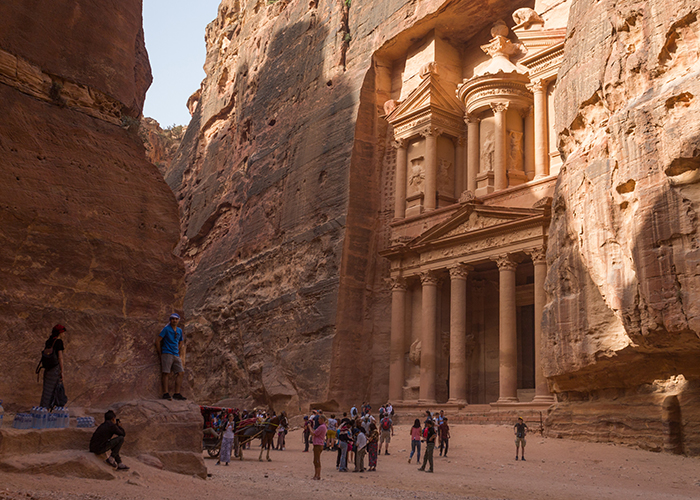 Previous Day |
Wadi Musa 7.2 mi (11.6 km) |
 Next Day |
Sh’lam l-kon!
That’s a greeting that hasn’t been heard in these parts since roughly 300 BC when Aramaic was the major language of commerce and culture! It is not the greeting I heard at 4:18 AM in Wadi Musa. Oh no, that was the 20-minute call to Salat al-Fajr over the loudspeakers, seemingly right outside my window! So, I slogged out of bed and shook off my exhaustion from two sleepless nights, but as I stepped out the door, excitement started to replace fatigue. I was on my way to see my fifth Wonder of the World: the Rose City of Petra!
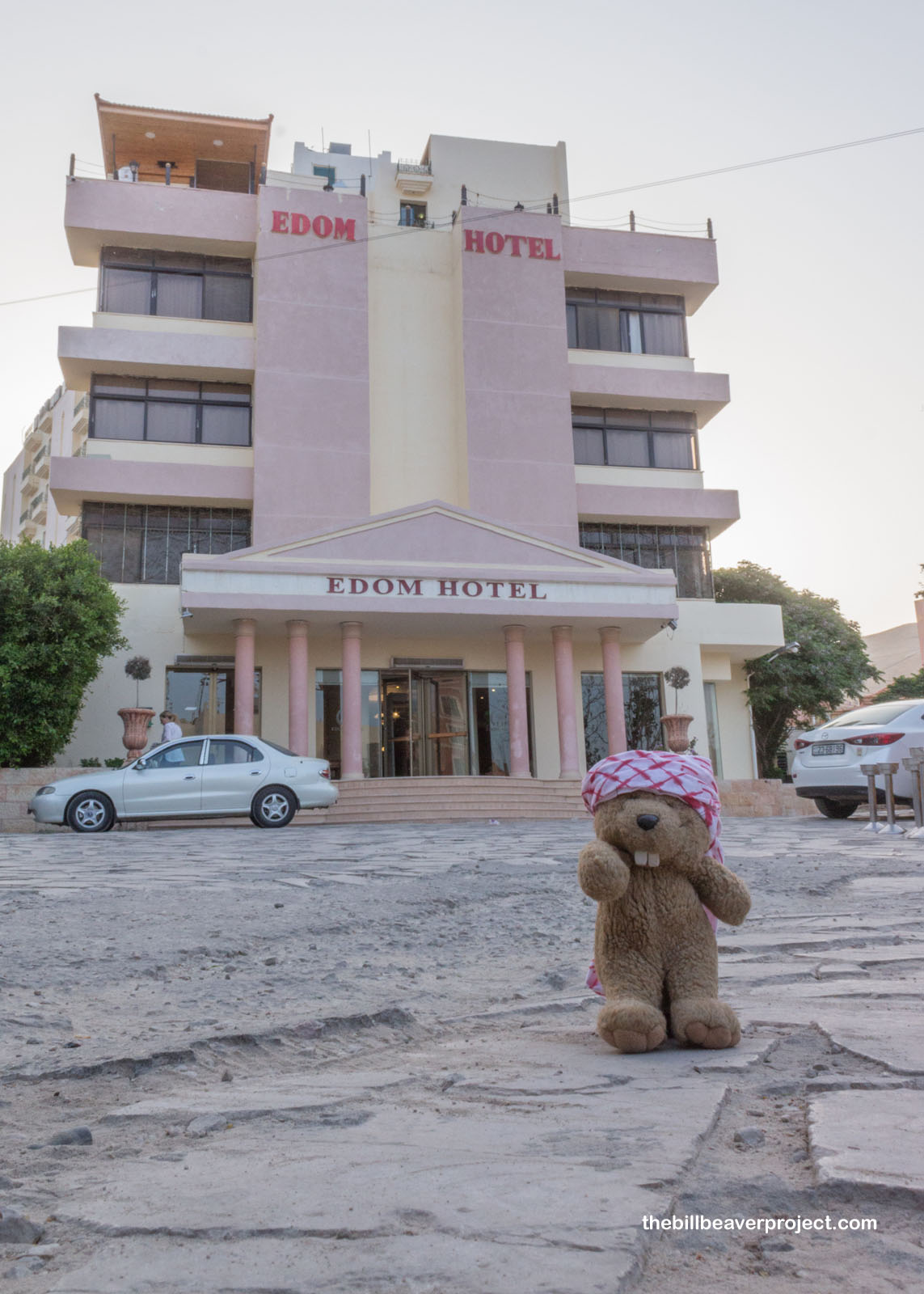 |
The beautiful thing about the Edom Hotel was that it almost at Petra’s door. My goal was to enter as early as possible after the opening time of 6:00 AM, but even then I could tell I was going to have some competition: early buses and groups of trekkers looking for that perfect morning light on the famous Khazneh, or Treasury!
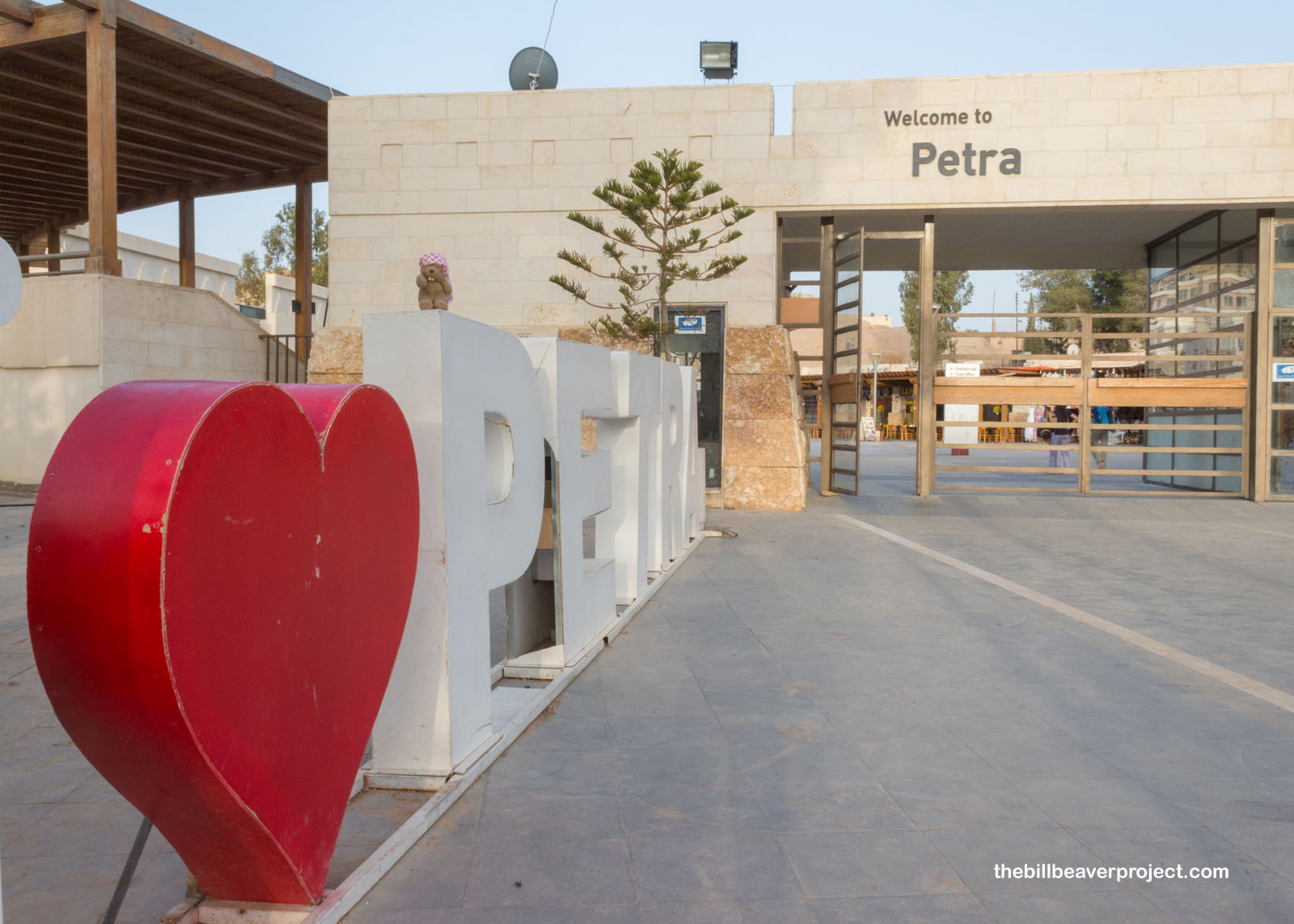 |
As I hustled toward the famous slot canyon leading to the Khazneh, called Al-Siq, a fellow named Mohammad stopped me in my tracks to fix my keffiyeh, which still was not tied quite right. Once he had installed it very securely on my head, he asked if I wanted to take in a completely different view of the path to the Khazneh. Sure! And so, without a second thought, I embarked with Mohammad onto the Al-Madras Trail!
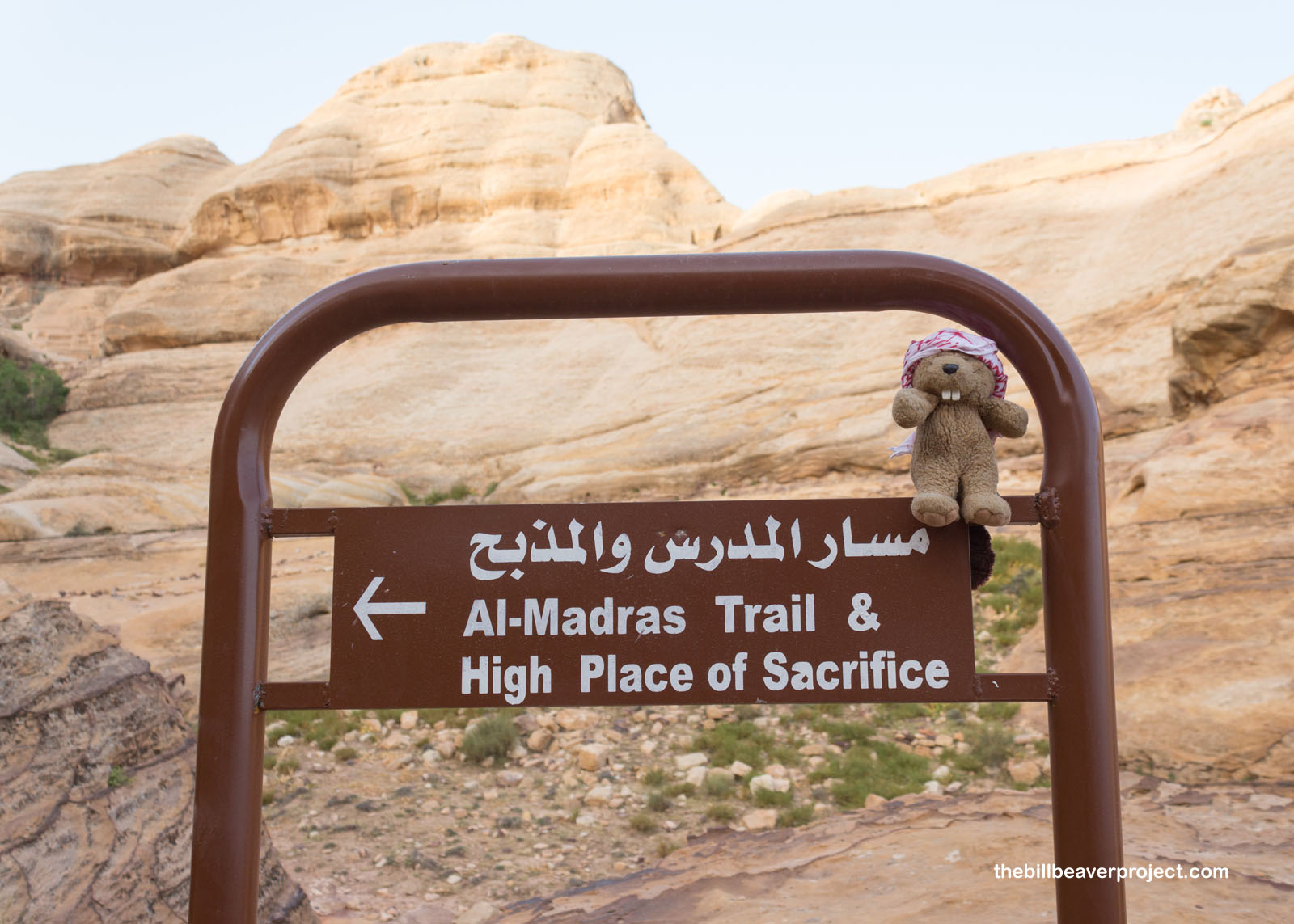 |
Right away, I could not help but notice just how similar the trail and landscape were to another I’d taken in Canyonlands with my family in 2017! It was slick rock, lined by smaller stones, and yes, there were even cairns to mark the way!
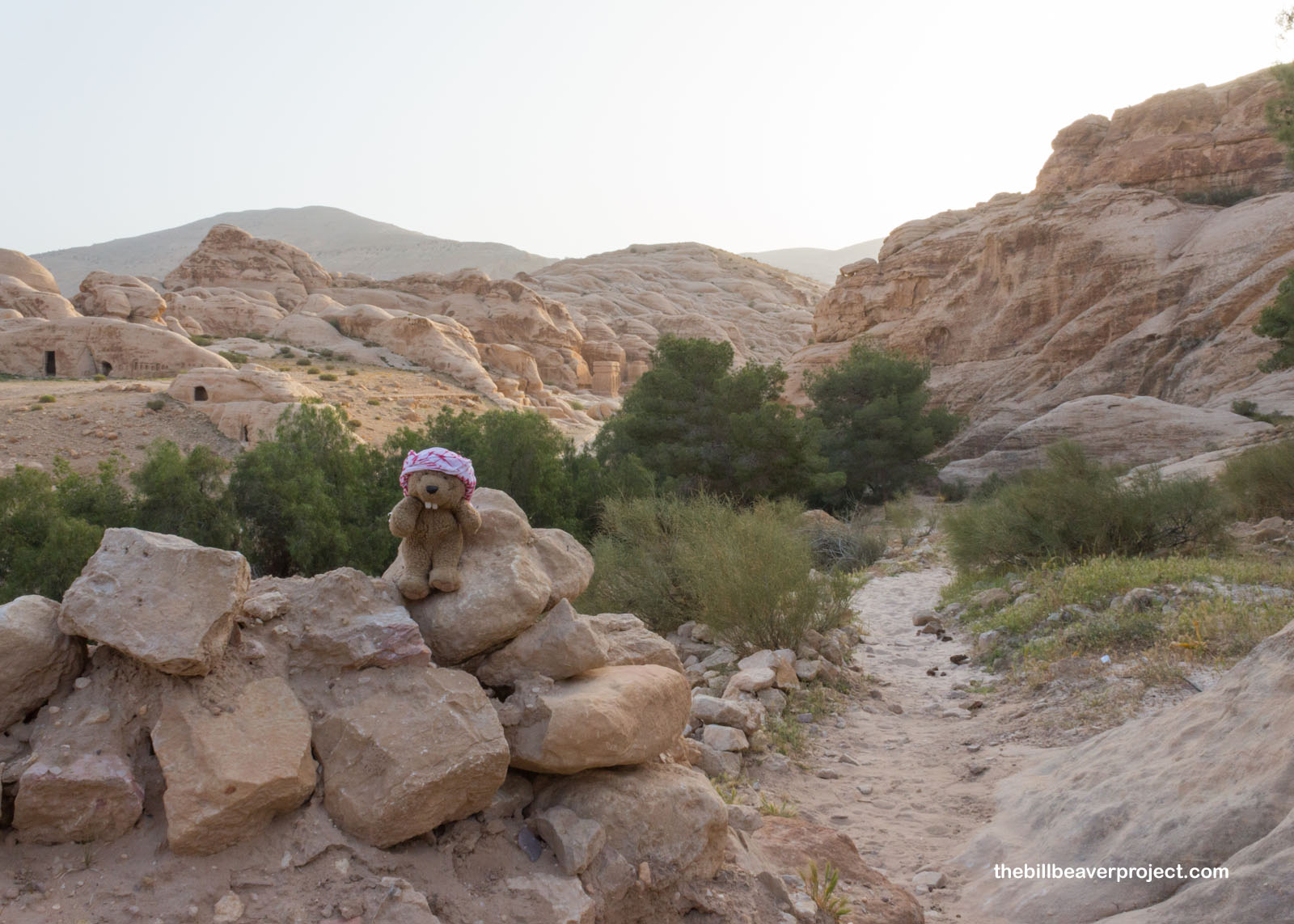 |
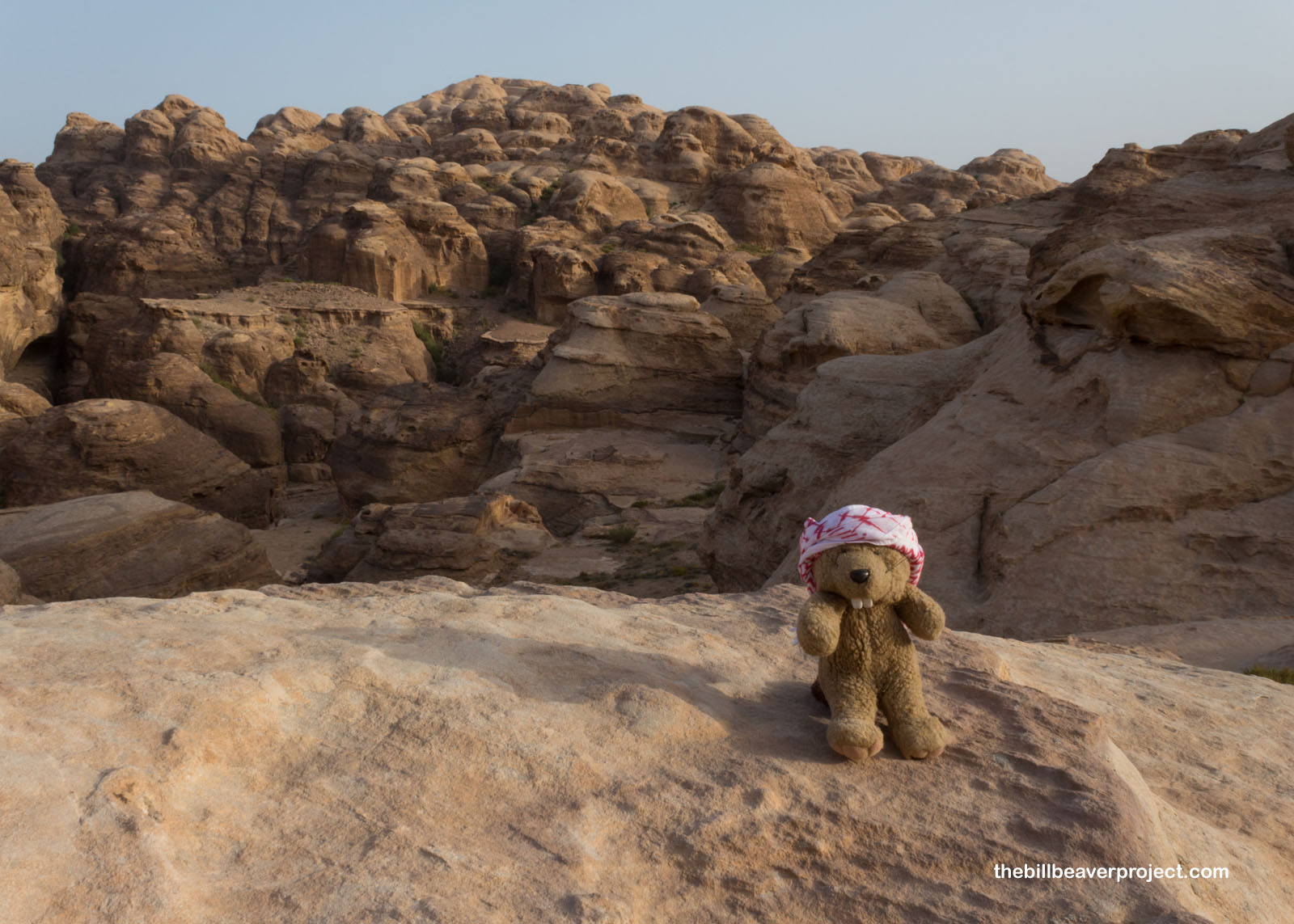 |
Mohammad said he’s led quite a few treks up this way and still finds tourists who think they can find their own way and end up hopelessly lost. I thought the trail was pretty well marked, until we got to the top of the rocks, passing a huge turtle-shaped boulder, and the trail faded away!
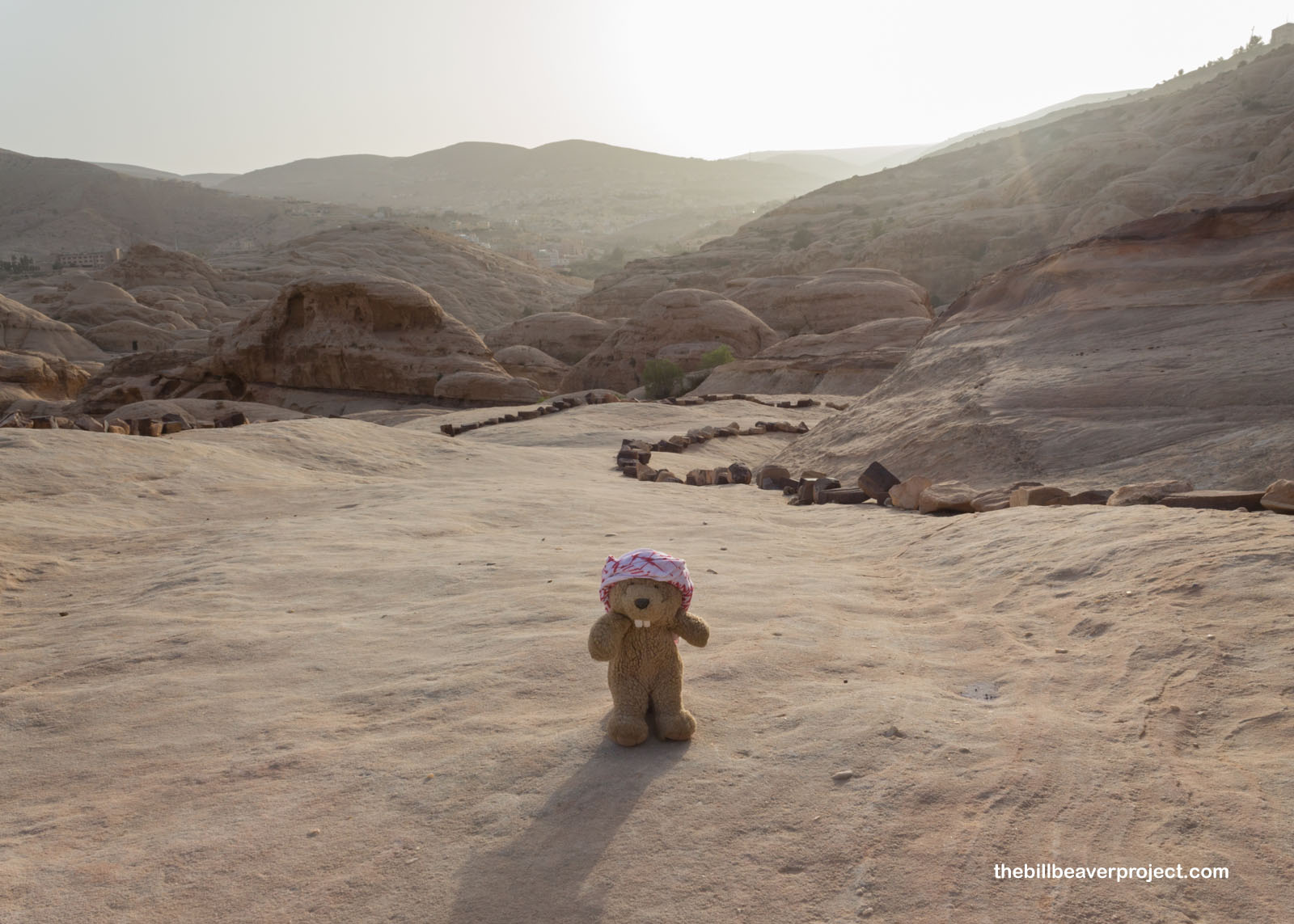 |
We descended into a valley, where I stared in amazement at just how well hidden the capital of the Nabatean Kingdom could keep itself! I was surely staring right at it, but I could not for the life of me figure out where I was supposed to look!
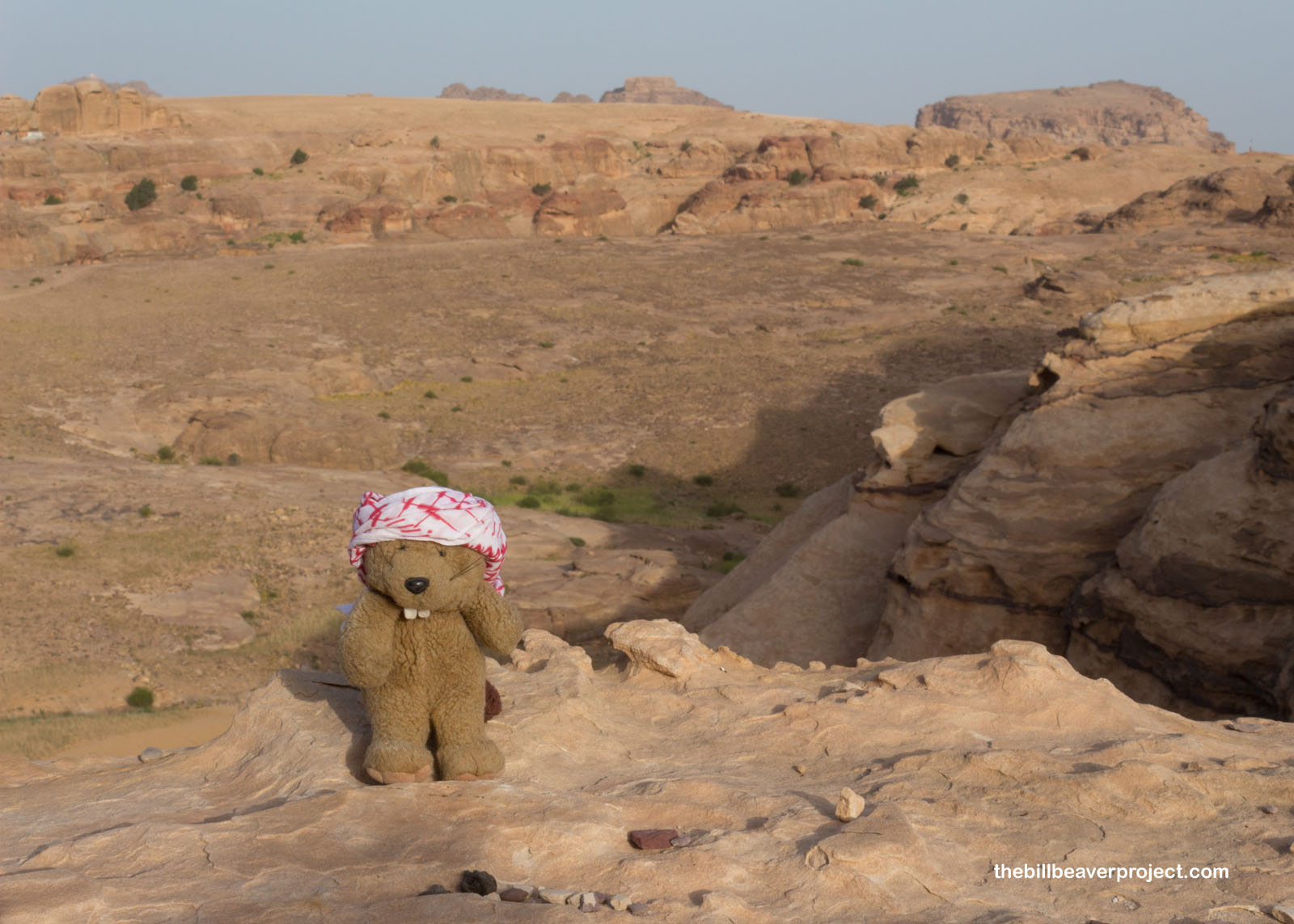 |
Mohammad made a point of showing me some rows of durum wheat that had been cultivated here for centuries as a food source for the goats we later found penned up in a cliffside shed!
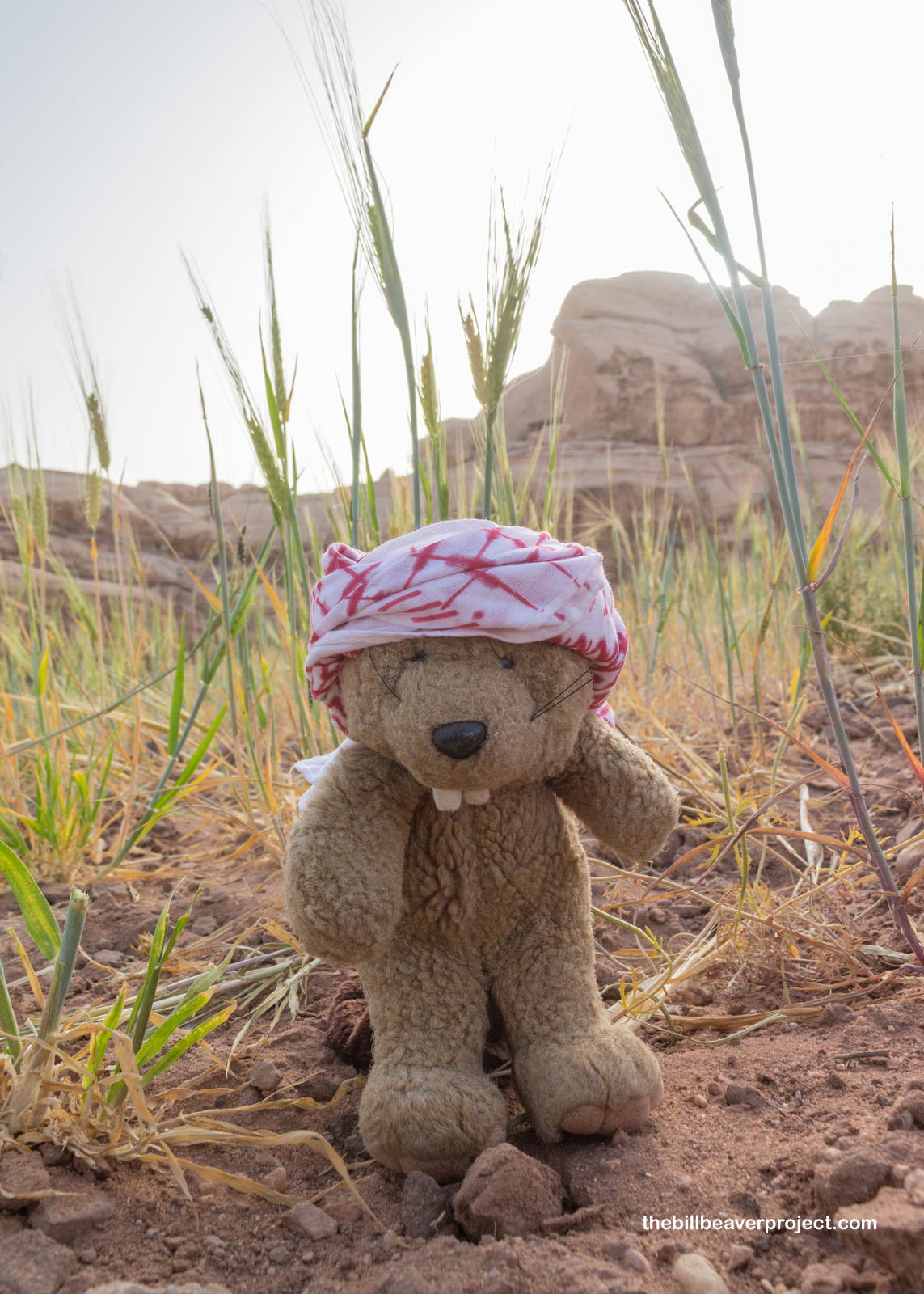 |
As we descended once more into a red canyon, Mohammad talked about his experience traveling the world with his band, and he wanted to make very clear, between puffs of his cigarette, just how much he loved Georgia and Georgian women!
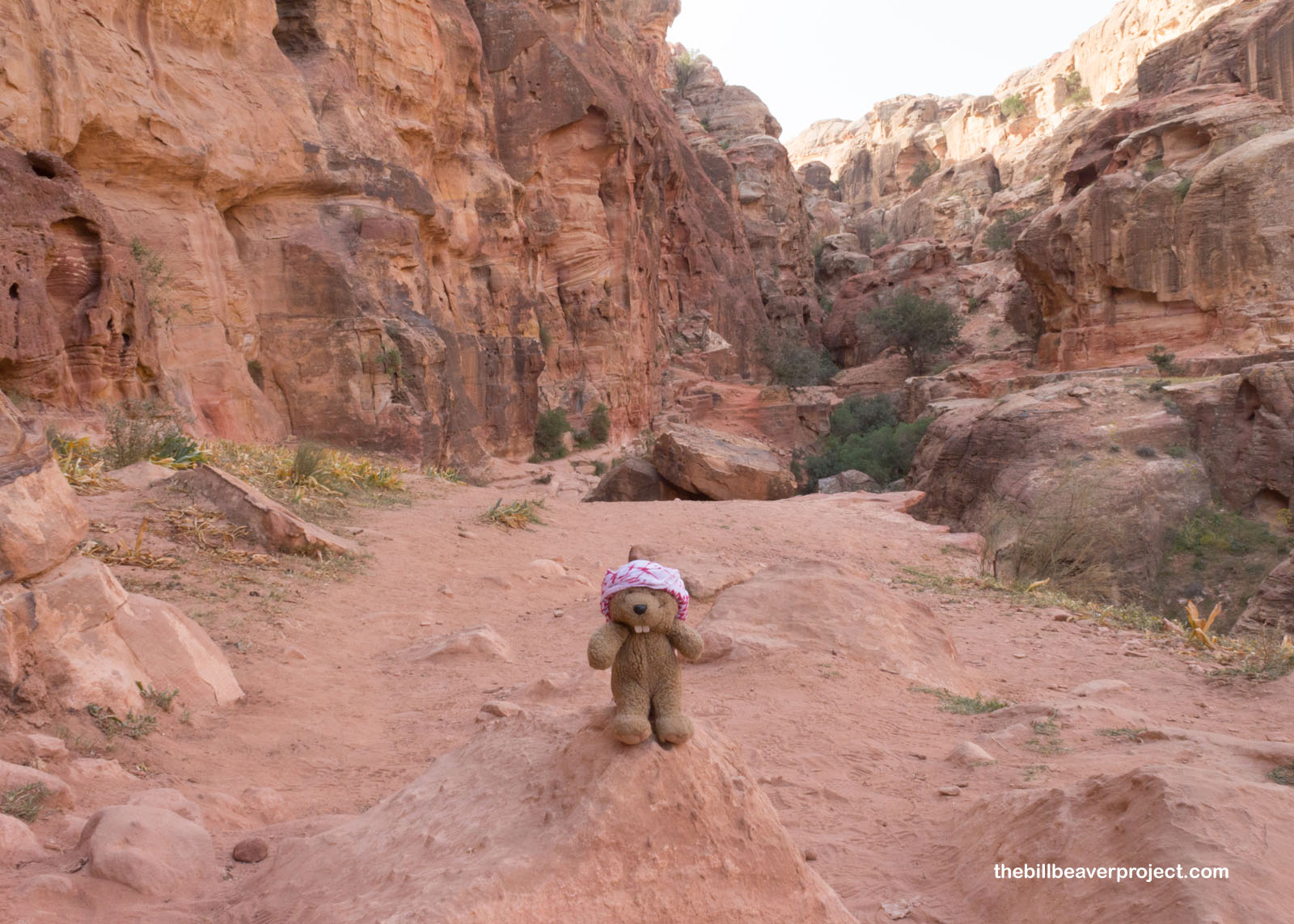 |
Then, after about an hour, the famous Khazneh appeared below us, a blanket laid out for visitors to recline for photos. It was a whole different view than I was used to from photos and the third Indiana Jones movie, and so, after getting crunched a hundred Jordanian dinars for the tour since I had no smaller bills, I grumblingly made my way down the last narrow path to behold the Khazneh from its usual vantage point.
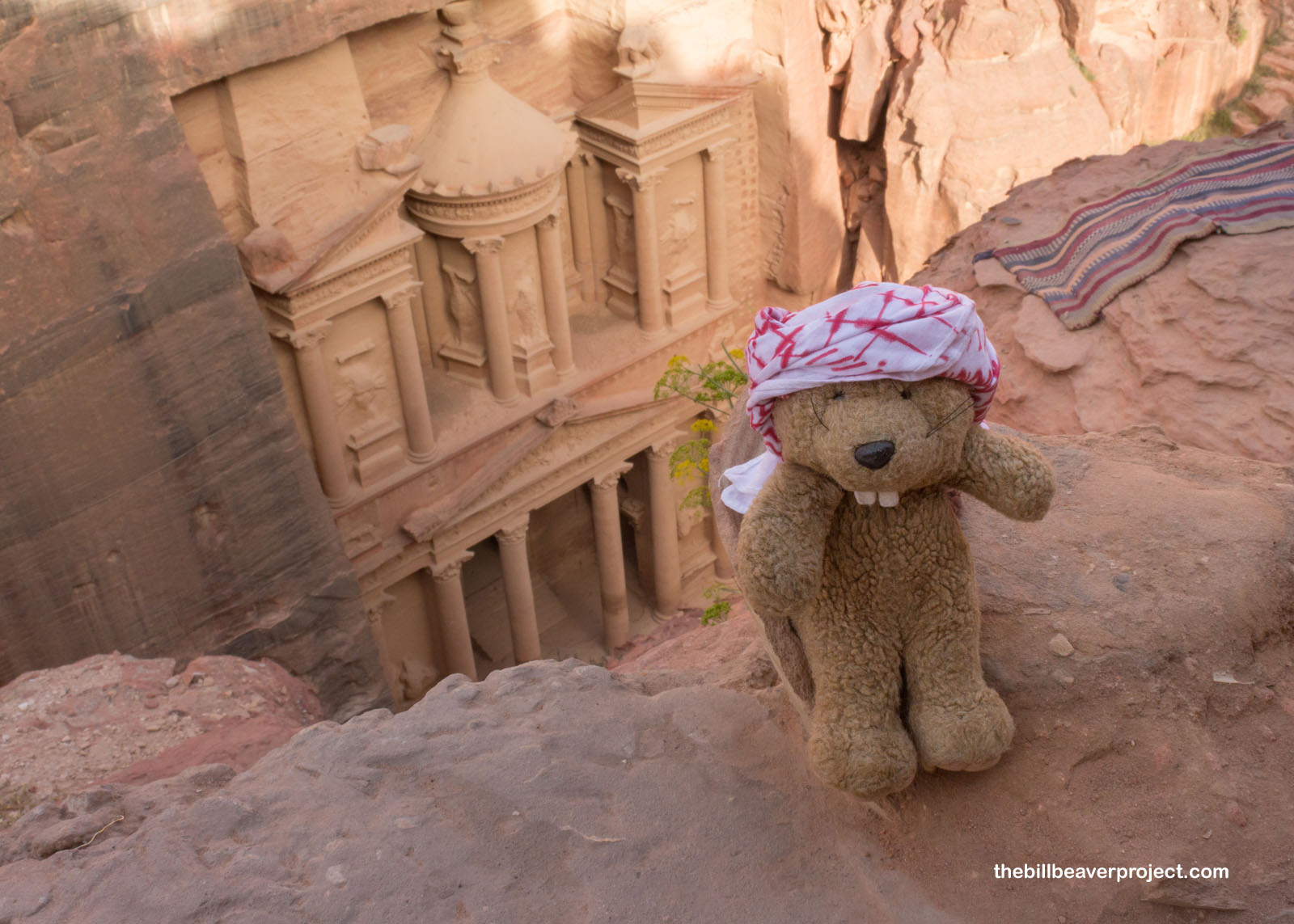 |
Al-Khazneh means “the Treasury,” but this magnificent carved temple wasn’t meant to store money. It was the tomb of King Aretas IV, who not only ruled Petra but also Damascus and held a lot of sway in the politics of Judea! It only got its name of “treasury” when a rumor spread that pirates had hidden stolen treasure in an urn on one of the upper levels!
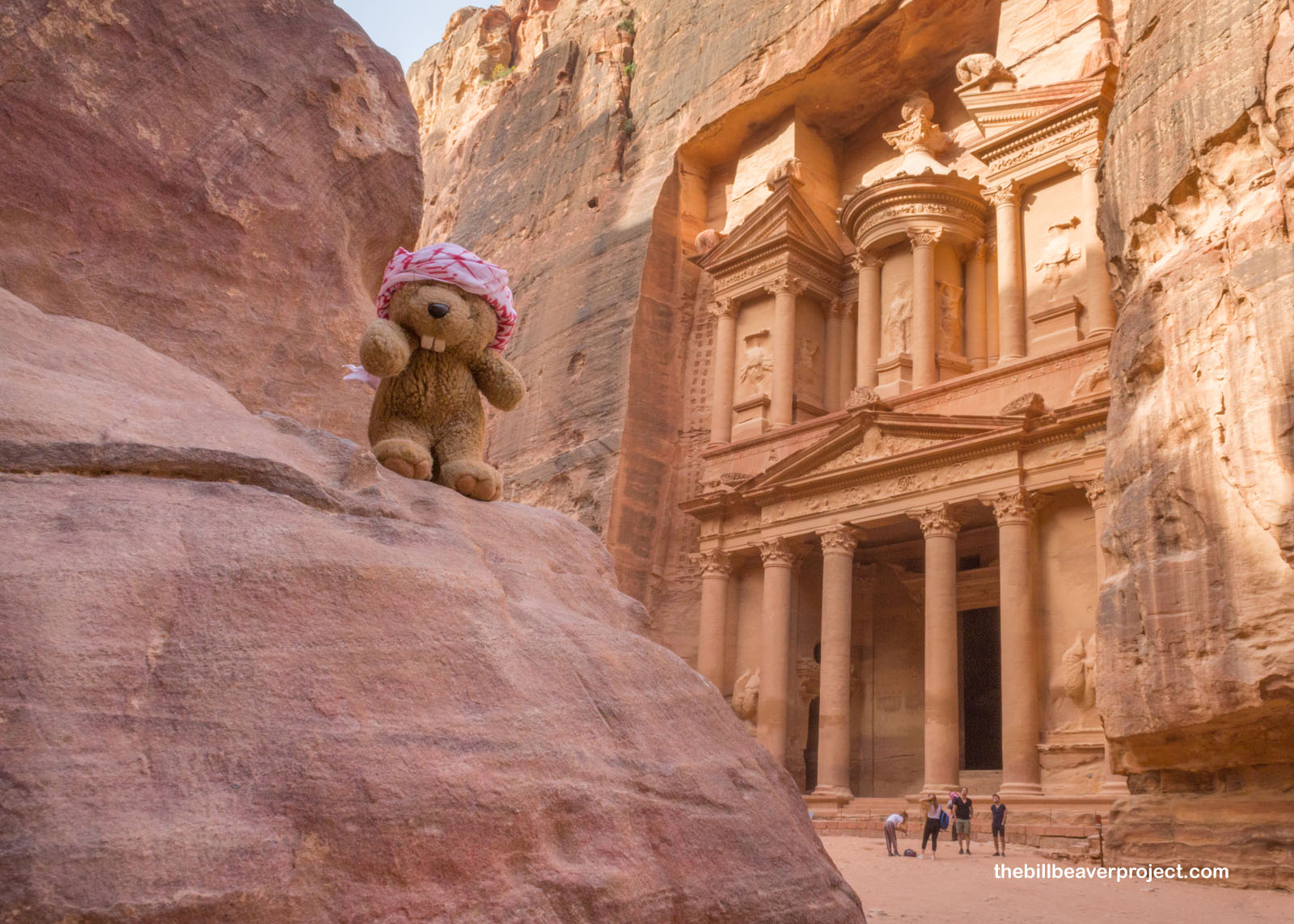 |
I was really surprised that it wasn’t already more crowded at the base of the Khazneh, but I was not one to complain. I was super curious, though, having seen the most famous temple in all of Petra, what else there was to see? There was nothing but a single room with blank walls inside the Khazneh, so I had to turn to the right and start walking!
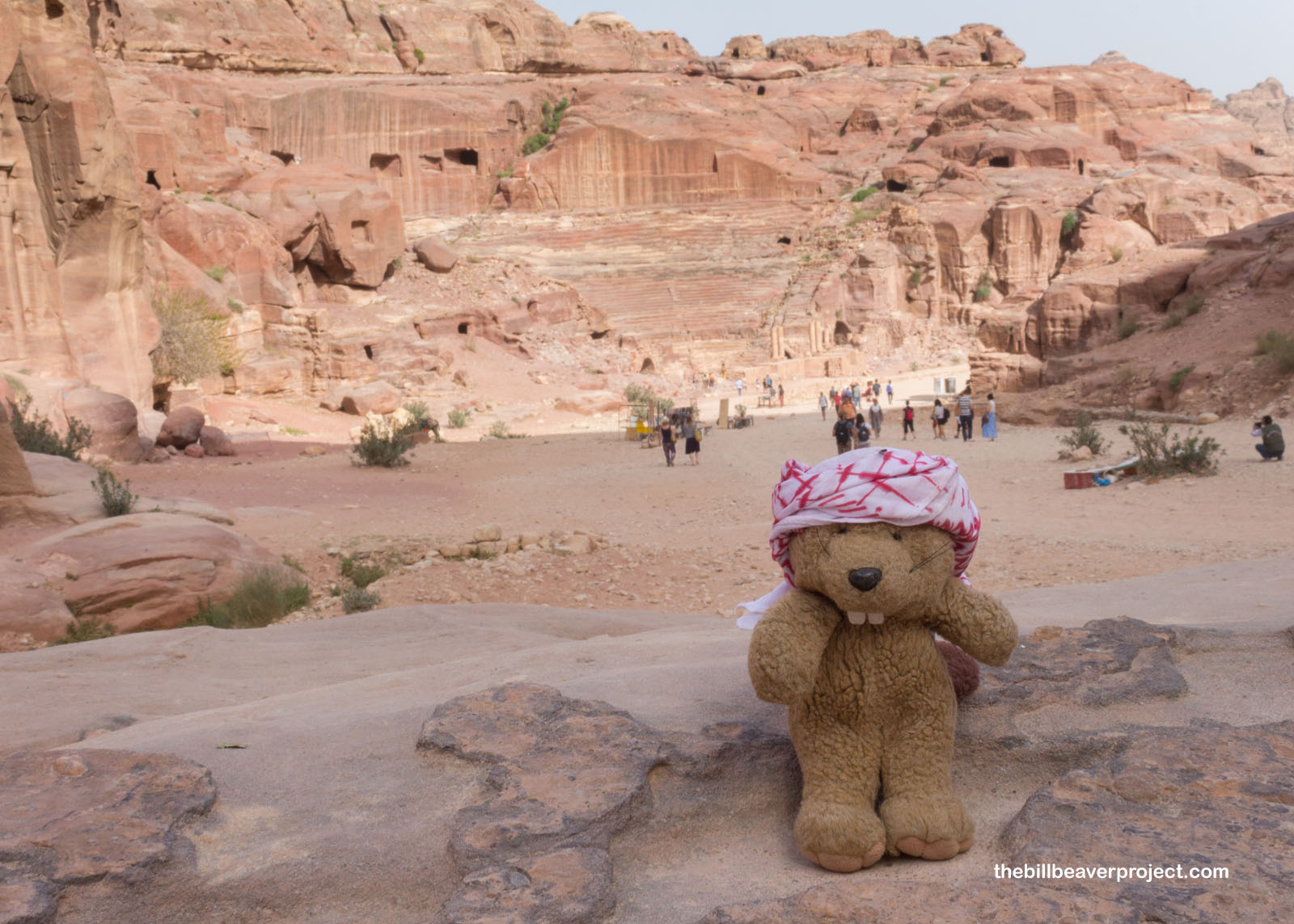 |
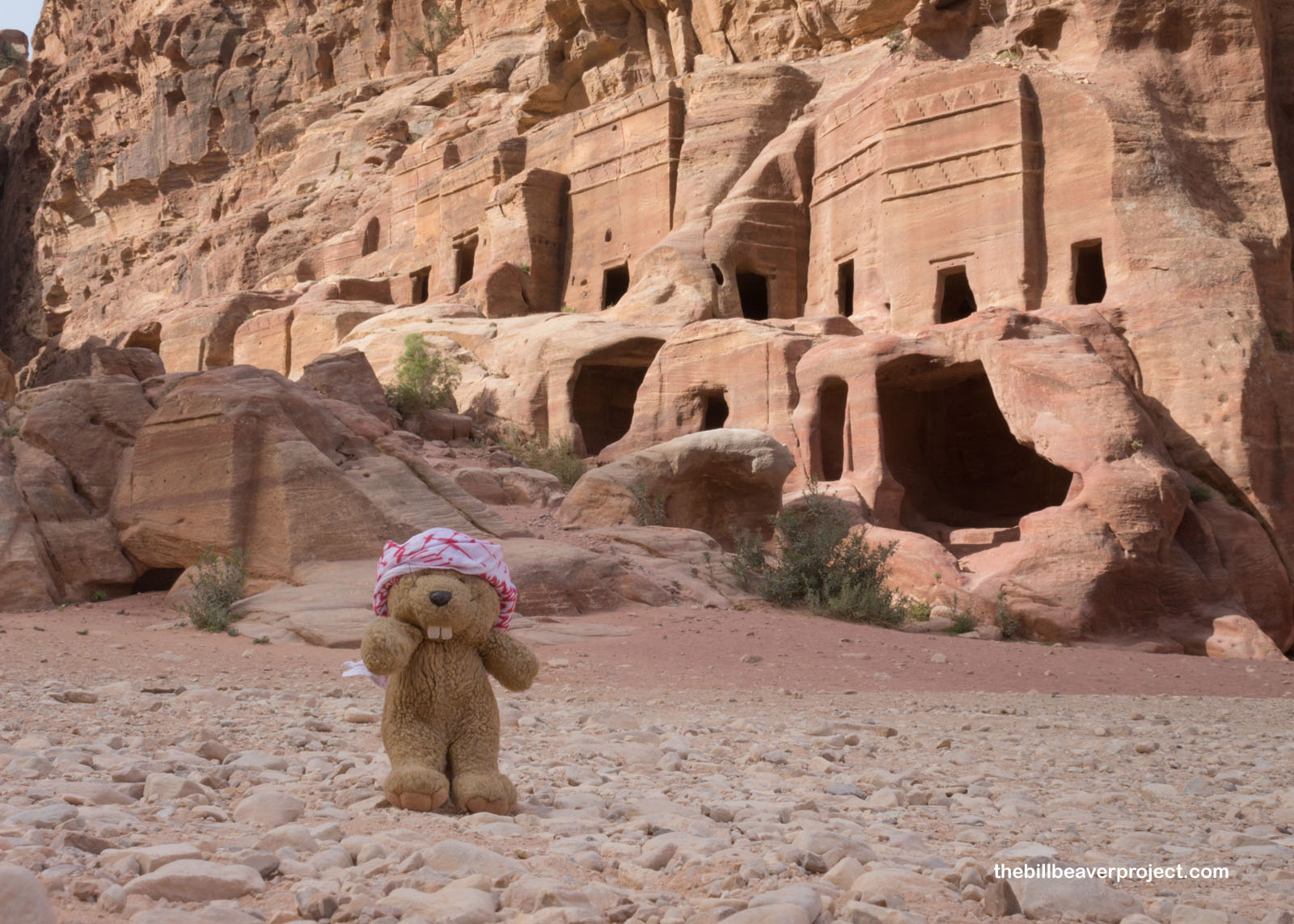 |
At its height, over 30,000 people lived here at Petra, and so in the valley beyond the Khazneh, there are whole neighborhoods built into the rocks! Since the Romans arrived here in 63 BC and embarked on a massive building campaign, a lot of the buildings are Roman influenced, like the grand amphitheater, which seated 8500 spectators and was also a project of Aretas IV!
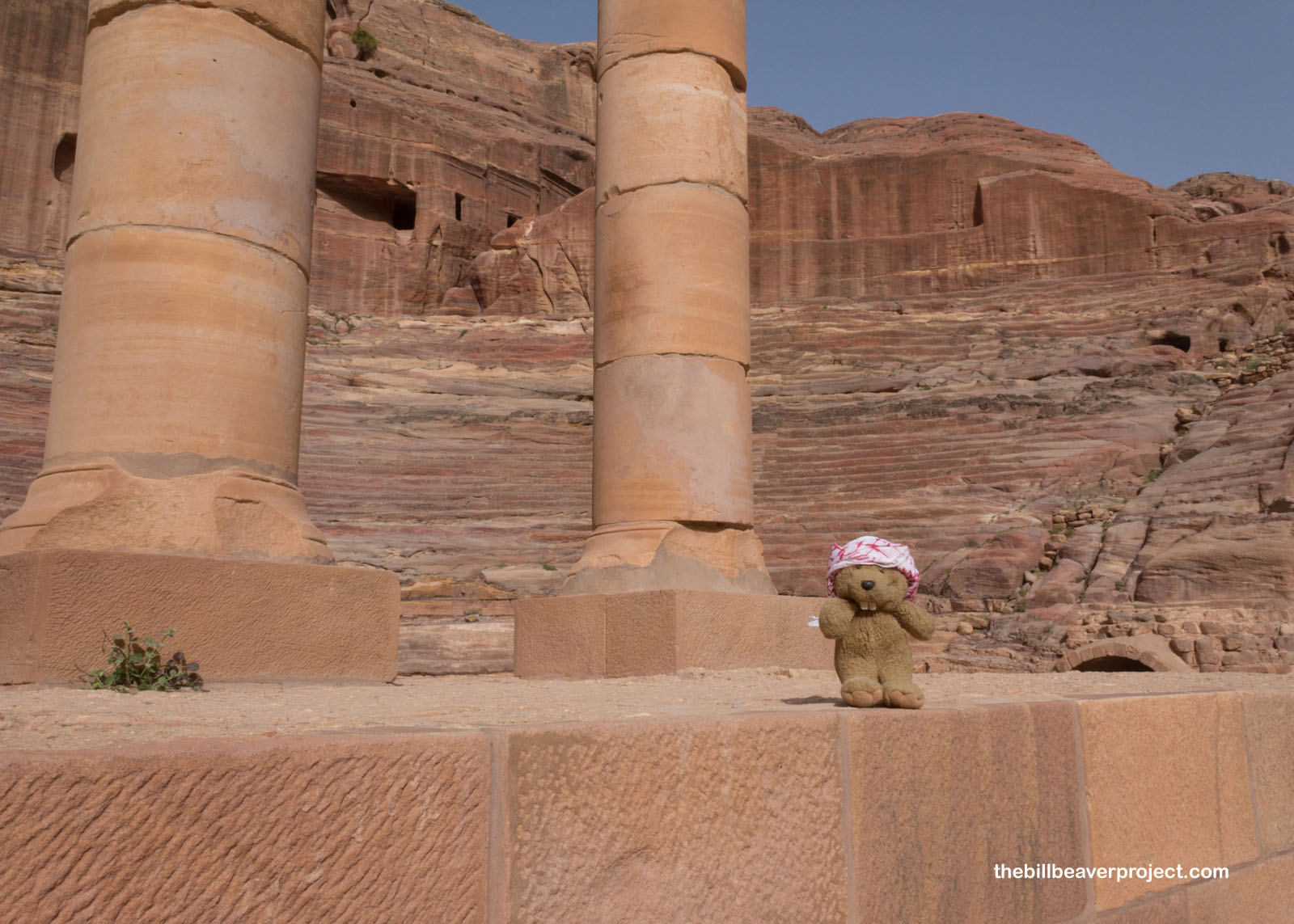 |
I strolled down the Colonnaded Street, where merchants were assembling their wares for sale and the mercury had started to creep up! Shade in Petra was not going to be an option, so I decided to hustle a little more!
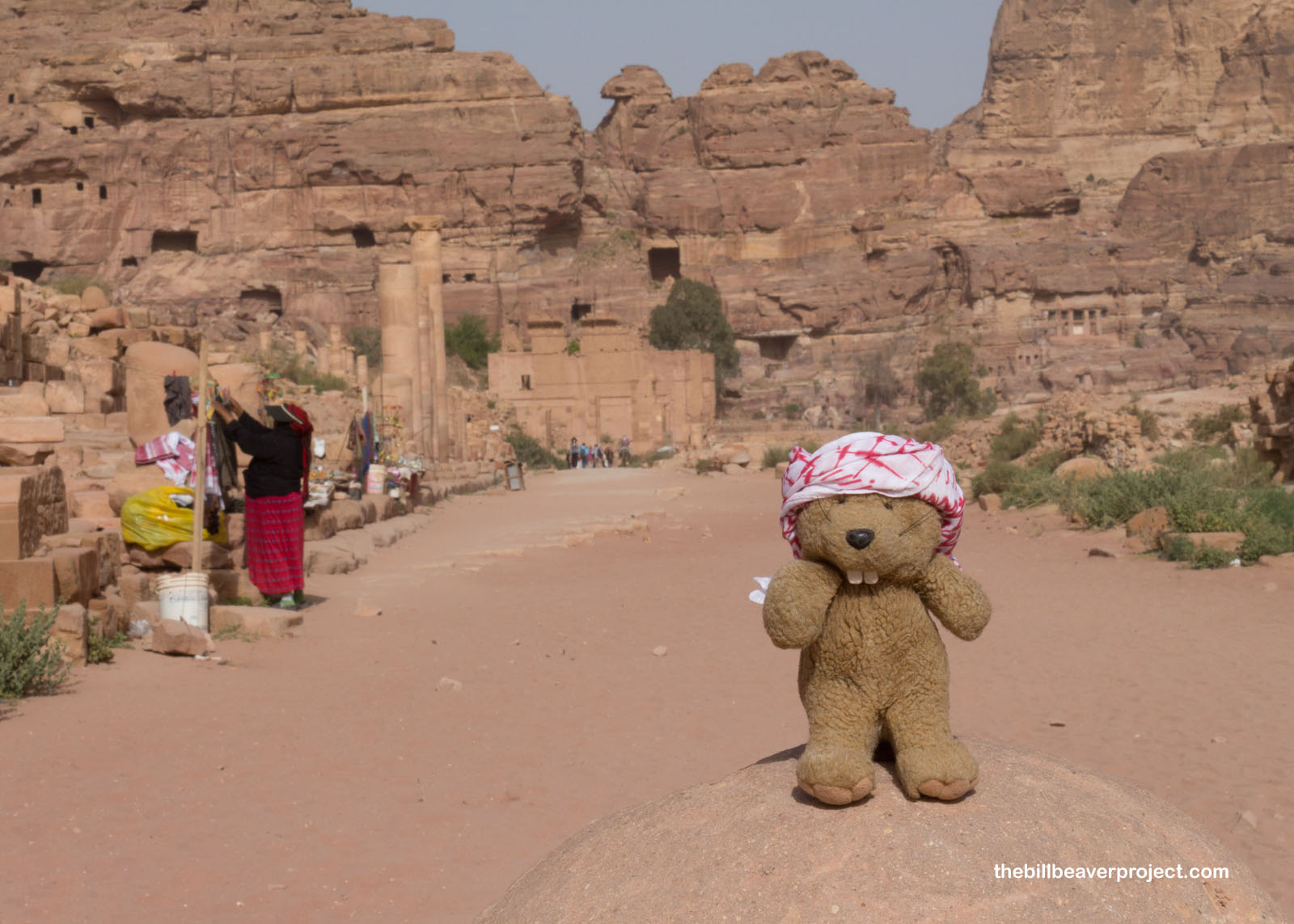 |
On the right side of the Colonnaded Street was a display imagining what the Temple of the Winged Lions must have looked like before an earthquake destroyed it in 363 AD. It was dedicated to Petra’s supreme goddess, Al-‘Uzzá, who represented protection and love, and was one of three main goddesses (the others being Allāt and Manāt) who were worshipped here in pre-Islamic times!
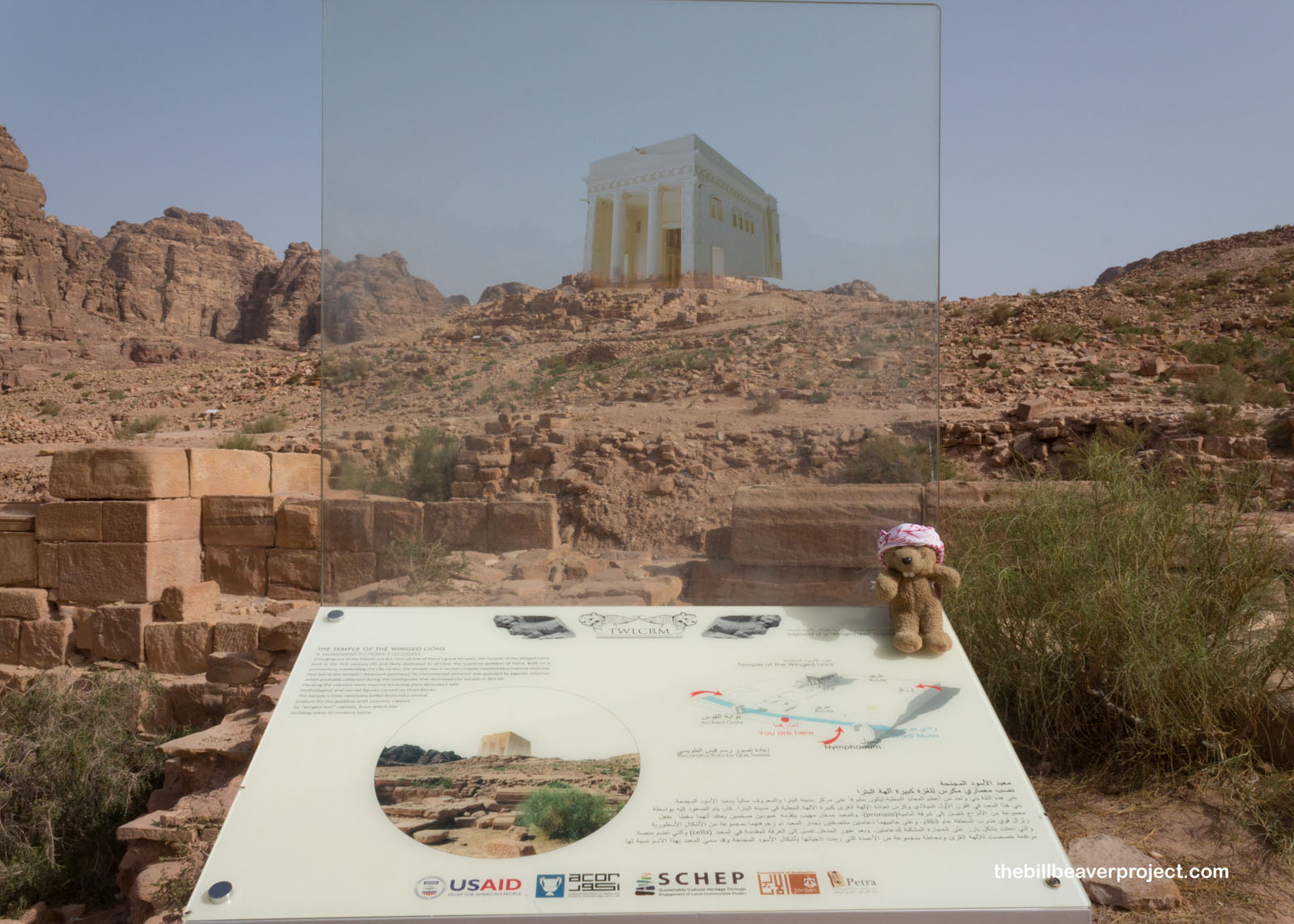 |
On the other side of the street lay the collapsed columns of the Great Temple, which has only been excavated since 1993! In that time, a 7560m2 temple has been unearthed, revealing some amazing insights into Petra’s culture!
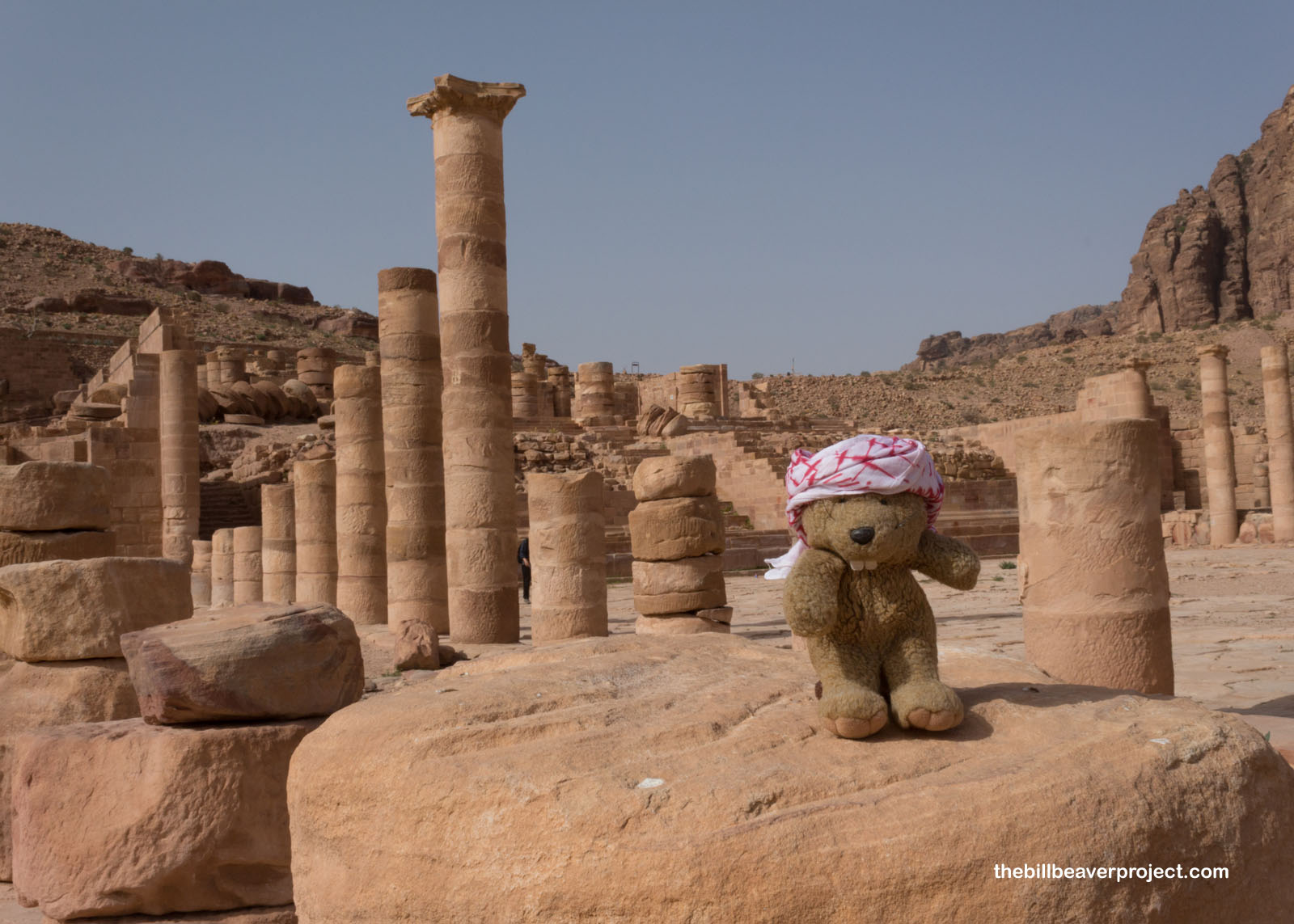 |
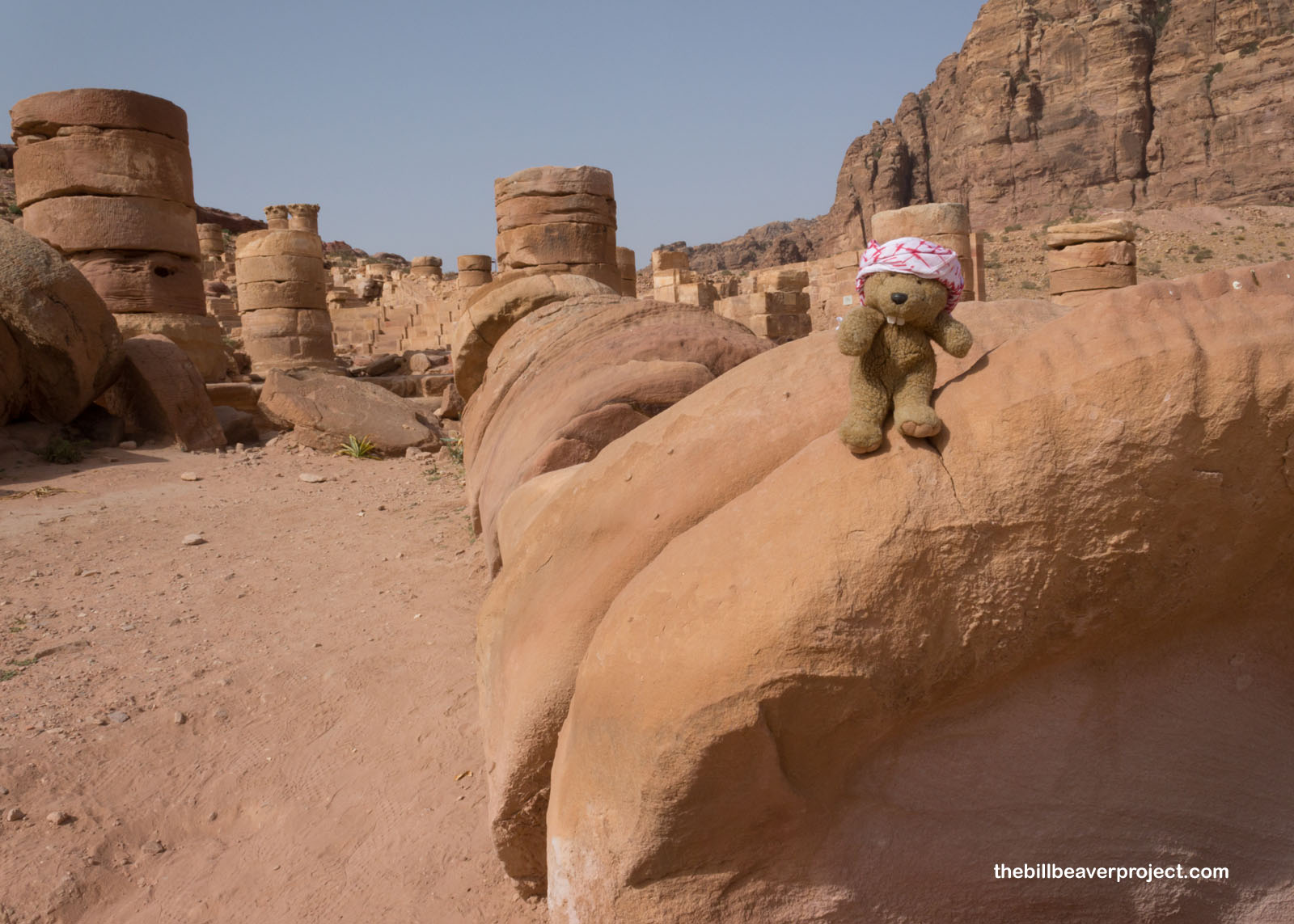 |
This red-and-white stuccoed temple incorporated a blend of styles, mostly discovered inside! There were Nabatean bowls but Roman figurines and inscriptions, as well as carvings of Asian elephants, even though the African species was much closer!
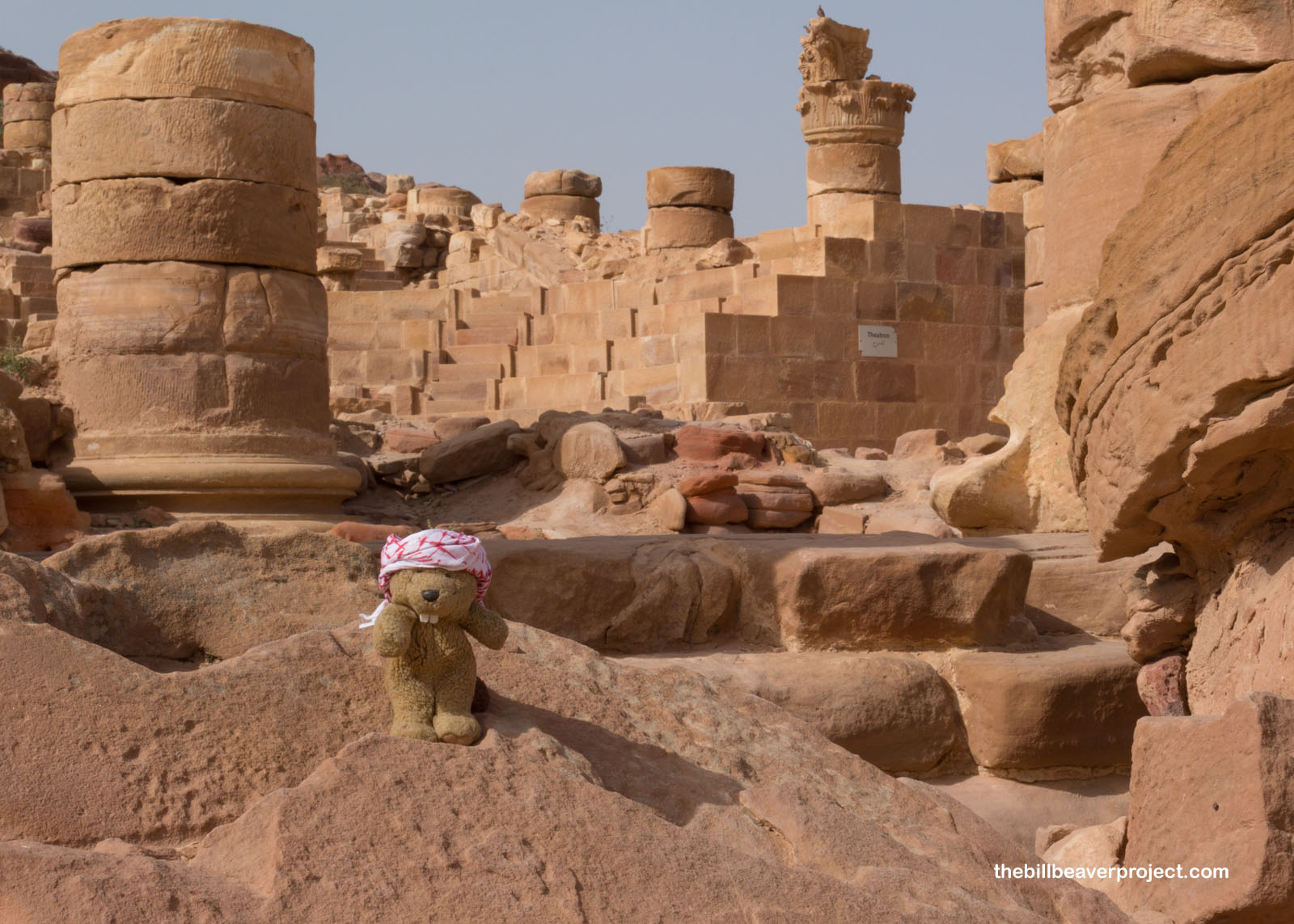 |
Next door stood the Qasr al-Bint, which honored the king of the Nabatean gods and son of Al-‘Uzzá, Dhushara! It was used for about four centuries until the Romans set fire to it for reasons that remain unknown!
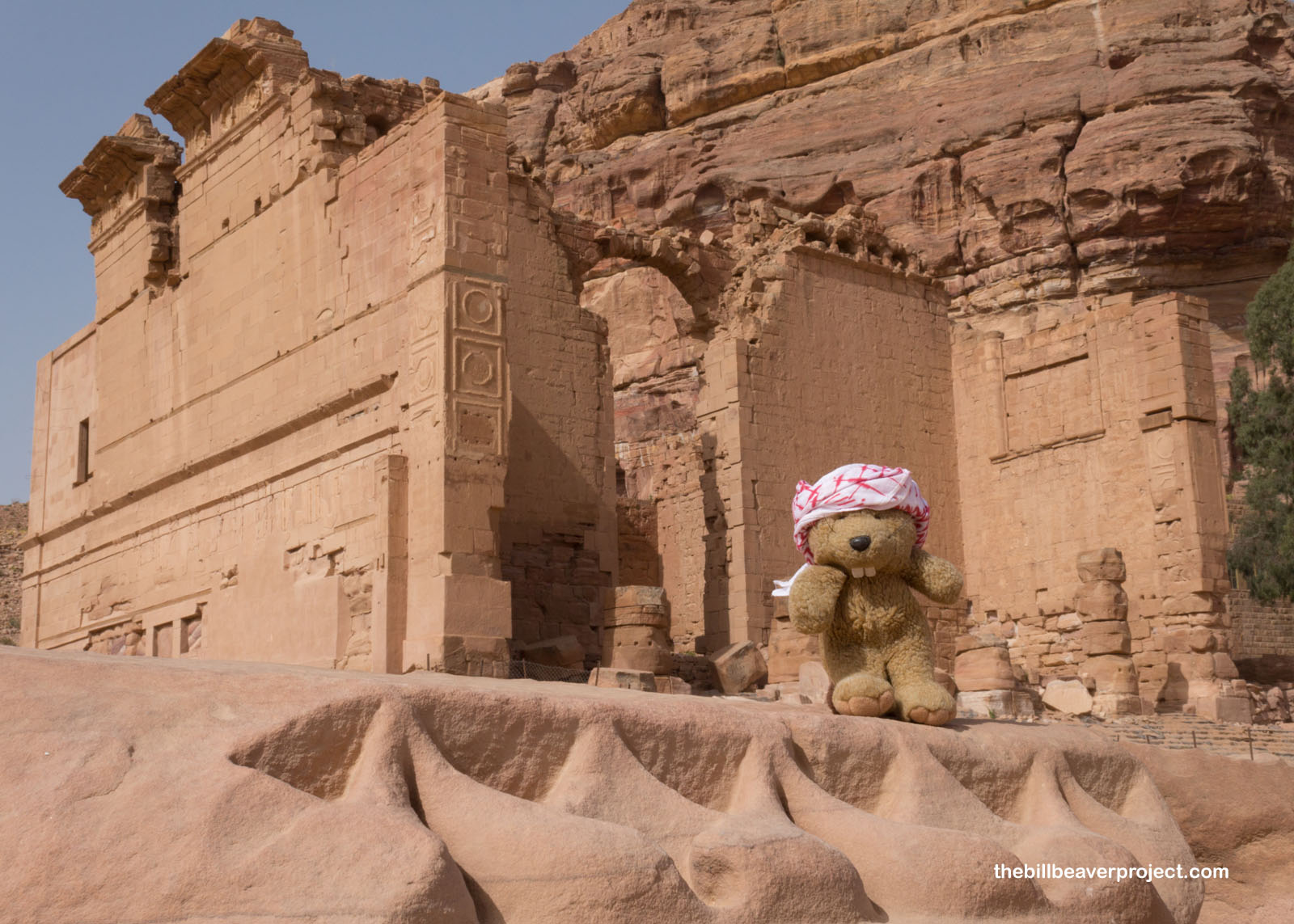 |
Having reached the end of the Colonnaded Street, I was starting to sweat, but I still had quite a way to go before reaching the end of the path. At the base of the stairs leading to the Ad-Deir, or Monastery, I politely declined the offers of many donkeys to transport me to the top. This was a trek I was determined to make on my own!
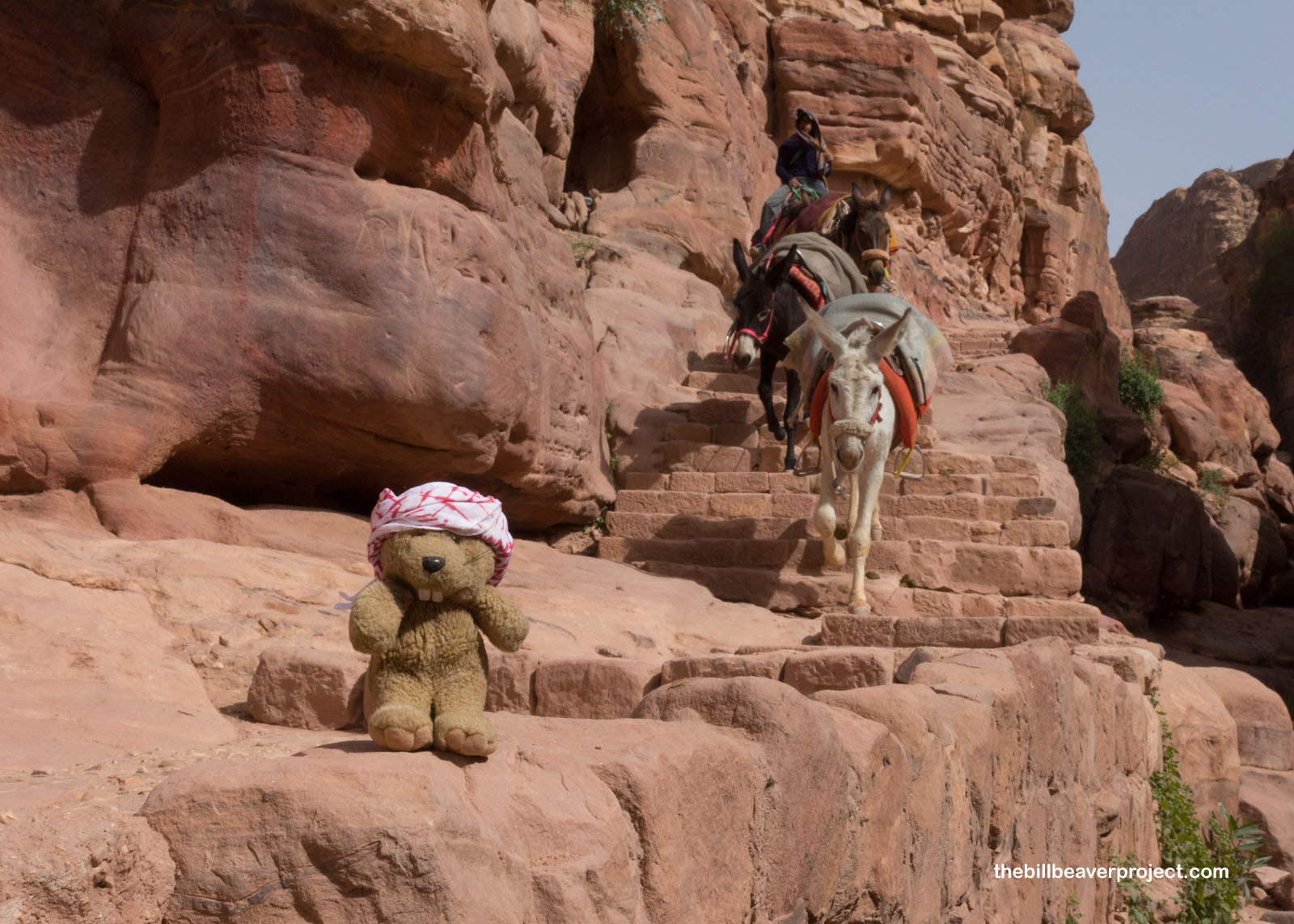 |
Determination was the key to this upward trek! It was super hot, and there was no shade on these stairs. I flashed back to the brutal steps of Mount Baegundae as my pace started to slow. I accepted the hospitality of a merchant with a Green Bay Packers cap, whose name sounded like Saora, and who insisted I sit and drink from the filthiest tea cup I’d ever seen! But, the tea was boiled, and it did give me a strength boost, just enough to get to the top of the winding stairs and behold the Monastery at last!
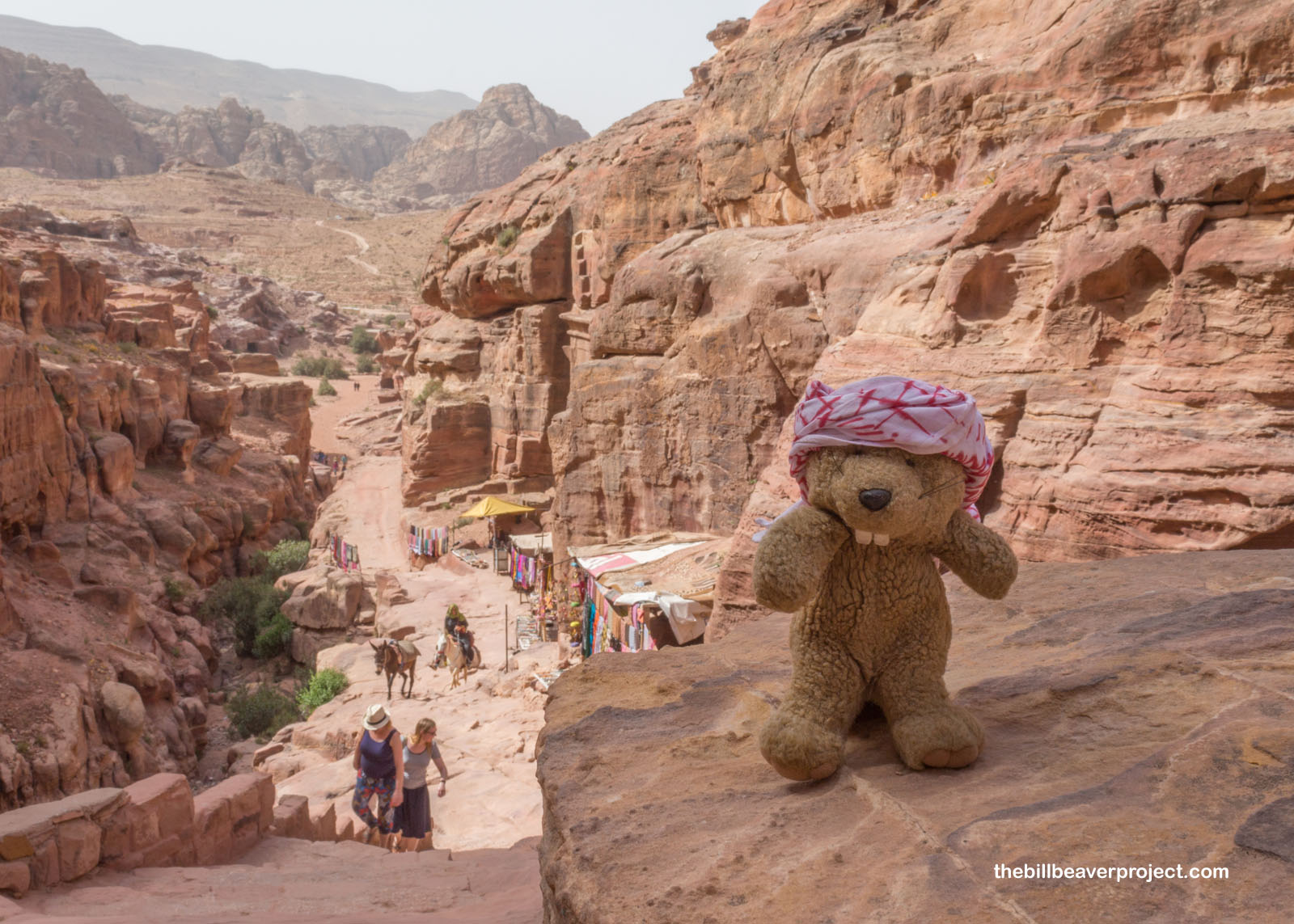 |
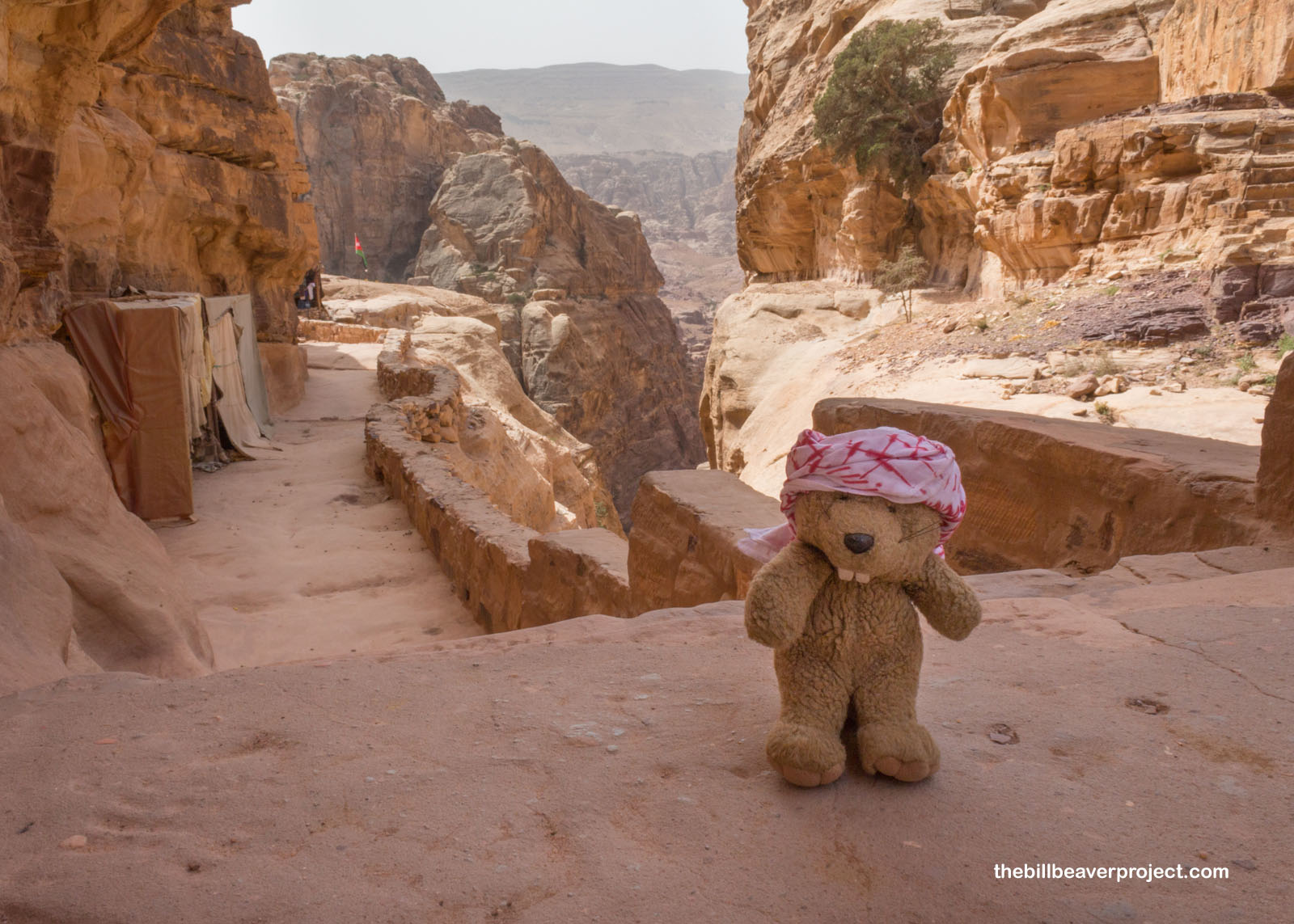 |
The Monastery is the perfect bookend to a Petra visit, because it’s the mirror image of the Khazneh, if a lot harder to reach! It’s actually older than the Khazneh by about four years and was likely a temple to the deified king, Obodas I, who defeated both the Judean and Greek armies who invaded in 86 BC!
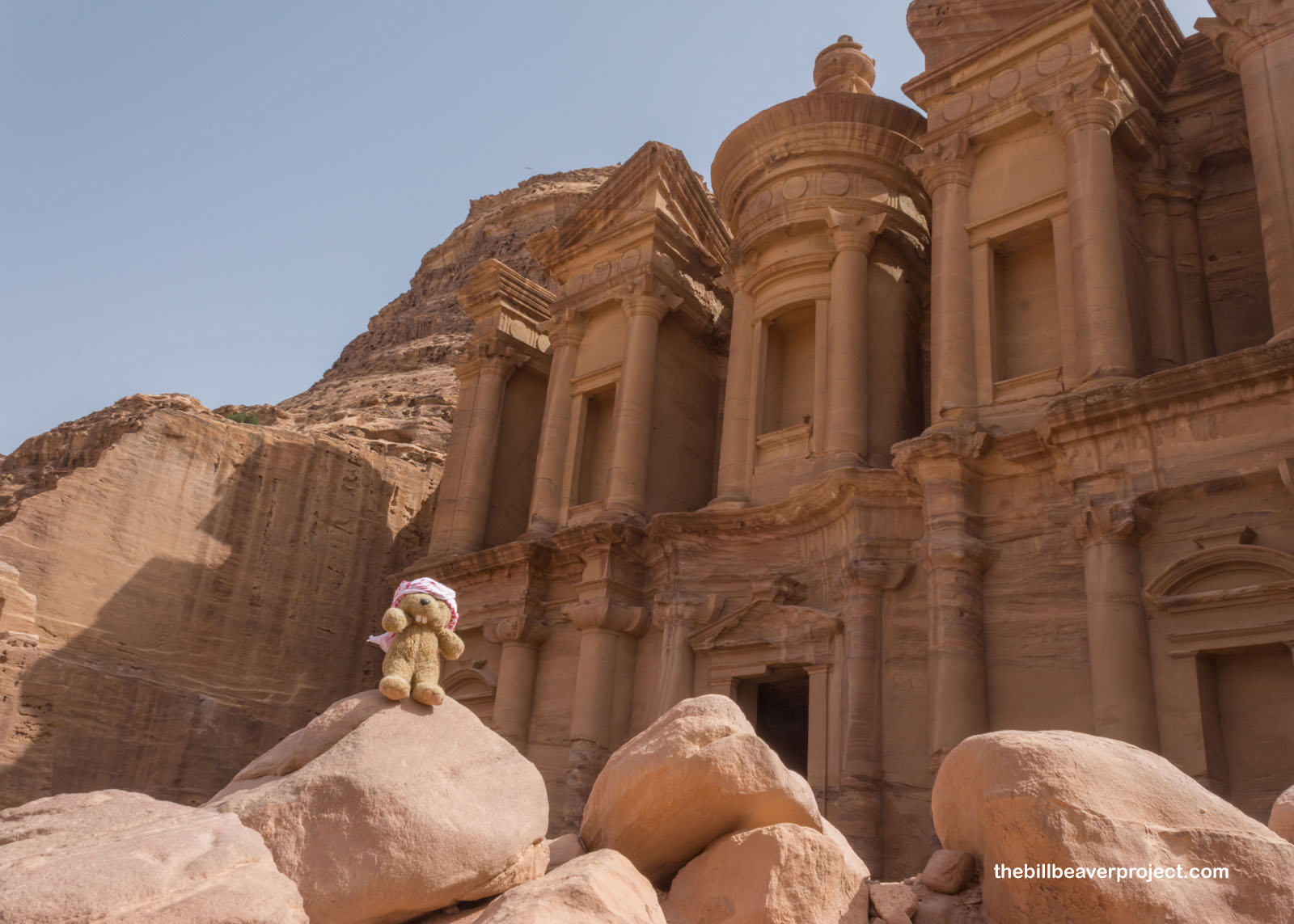 |
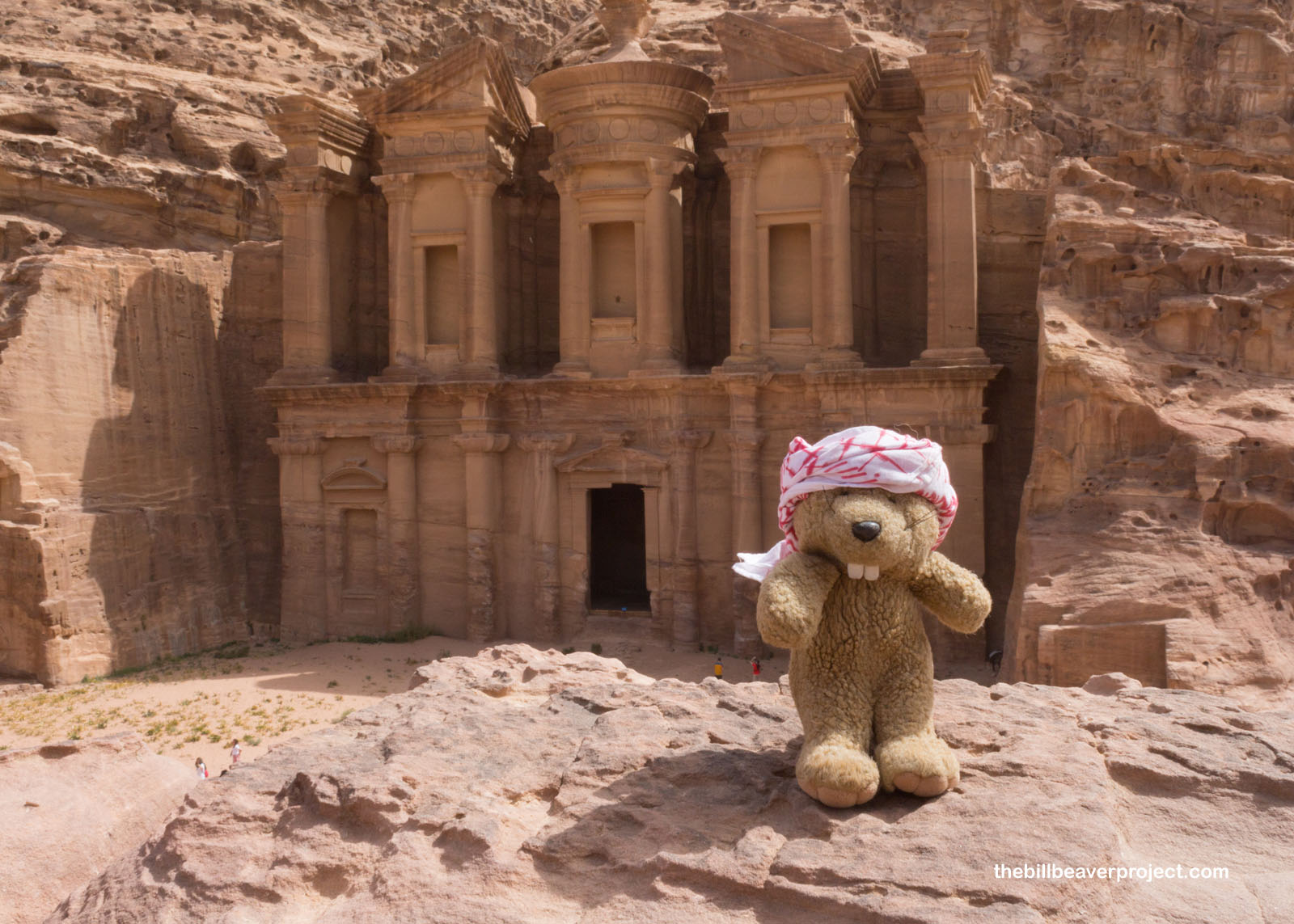 |
There was a lovely refreshment bar a short distance away, so I took the chance to cool off in the shade with some mint lemonade and a hummus wrap. Not a whole lot of folks had made the trek to the Monastery, which made it a nice getaway from the building crowds way back at the Khazneh. Though I had walked the main thoroughfare of this Wonder of the World, I could have filled weeks wandering the side trails and discovering new views of its architectural wonders. For now, though, I had to return to Amman for the final stage of this international adventure.
Sh’lam l-ken!

 Previous Day |
Total Ground Covered: 258.9 mi (416.6 km) |
 Next Day |
